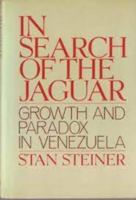Middle School: My Brother Is a Big, Fat Liar
(Book #3 in the Middle School Series)
Select Format
Select Condition 
Book Overview
From blockbuster author James Patterson comes the third installment in the #1 New York Times bestselling Middle School series! Georgia Khatchadorian-the sister of Rafe, the star of the first two Middle School books-plans to excel at Hills Village Middle School in all the places her troublemaking brother failed. She's even bet him that she'll quickly become one of the most popular girls in school, but no one will give her a chance! Even worse, Rafe has sneakily set her up to embarrass herself in front of the snooty "Princesses" who run the school and the boy who's caught her eye. Will she be able to overcome her fears and win her bet with Rafe? Find out THE TRUTH about Rafe Khatchadorian's sister in the first Middle School story from the point of view of the hilarious Georgia--a girl who's ready to speak her mind! Previously published as Middle School: My Brother is a Big Fat Liar.
Format:Hardcover
Language:English
ISBN:0316322032
ISBN13:9780316322034
Release Date:June 2014
Publisher:Jimmy Patterson
Length:304 Pages
Weight:0.81 lbs.
Dimensions:1.1" x 5.4" x 7.7"
Age Range:8 to 12 years
Grade Range:Grades 3 to 7
Related Subjects
Accounting Accounting & Finance Business Business & Investing Economic Conditions EconomicsMore by Stan Steiner
Customer Reviews
4 customer ratings | 4 reviews
There are currently no reviews. Be the first to review this work.








































